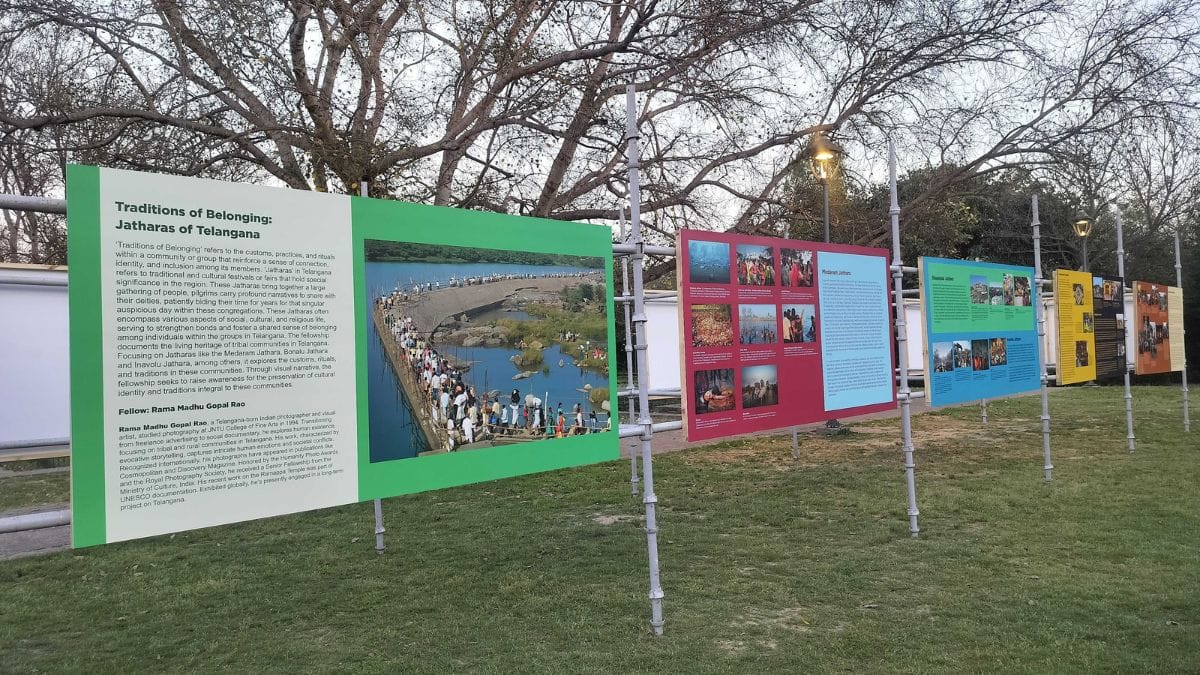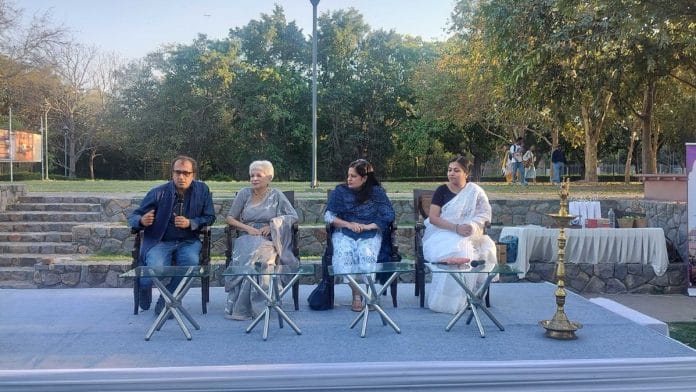New Delhi: As dusk fell on Sundar Nursery’s restored gardens, a panel discussed the state of preservation of India’s intangible heritage. It reflected on how much we have lost through years of ignorance and explained the economics of intangible heritage conservation.
There couldn’t have been a better place to start the conversation than the restored gardens of Bagh-e-Azeem. Amid birdsong, families enjoyed picnics and iftar parties, friends played games, and lovers stole a corner to sit, hands intertwined.
“Sunder Nursery now gets one and a half million visitors every year. It shows you how tourism and heritage are interlinked, and how the rate of return of heritage preservation is the highest in the tourism industry,” said Ratish Nanda, CEO of Aga Khan Trust for Culture.
On 20 March, Nanda was joined on the panel by Laila Tyabji, chairperson of Dastkar; Soity Banerjee, a journalist and responsible tourism strategist; and Tara Sharma, director of Jungwa Foundation. The three women elaborated on their respective sectors, highlighting how crucial the documentation of intangible heritage is.
Also read: Mughal-era ruins to heritage park—architect, author trace journey of Delhi’s Sunder Nursery
Crafts, Ladakh, tourism
The discussion was kick-started by Tyabji, who spoke at length about the need for the preservation of crafts.
“The general attitude toward craft in India is that it has always been here and it will always be here—it will always be the same. But this is not true. We think craft is unchangeable because nothing is recorded,” Tyabji said.
She pointed out that every craft goes through cycles, and in the absence of documentation, newer craftspeople can lose touch with how their forefathers practiced their craft.
Tyabji mentioned the tours she organised for artisans to visit the craft museums in Delhi, where many of them “almost fainted” looking at the craft of their forefathers. “There should be a scheme where every craft centre has a museum for artisans to visit, see, and touch the history of their craft,” she added.
The panel discussion took place at the inaugural event of the InterGlobe HERITAGE Fellowship, where two fellows were honoured: Rama Madhu Gopal Rao for documenting the Jatharas of Telangana and Vivek Sahu for his work on reviving the art of Ghat Chhatris of Varanasi.

The panel discussed the importance of oral heritage against this backdrop. “Twenty-five years ago, when I started working, there was no conversation on oral traditions and intangible heritage. We have come a long way since,” said Sharma.
Sharma, who is currently working in Ladakh, also stressed on the need for economic independence of the craftspeople. “The challenge for Ladakhi weavers is that they’re getting roped in as labourers for the Border Roads Organisation, and young people are getting way more money than they do by weaving,” she said.
Taybji agreed. She emphasised that until craftspeople get social recognition for their skill and are treated as skilled professionals included in the creative process, they won’t want to continue with their traditions.
The third link in this conversation on conservation was tourism. Banerjee said she is bullish on responsible tourism.
“Tourism is a fantastic ally for the conservation of craft, community, and heritage. Earlier, on posters for tourism, you only had big monuments like the Taj Mahal or the Dal Lake, but in the last 10 years, the needle has shifted. It has become about the experience of the place, which includes the community and the people,” she said.
Toward the end of the conversation, audience members had already got up to treat themselves to kebab and tea. After a walk through the gallery of Rao and Sahu’s work, people dispersed for a nice stroll in the Nursery.
(Edited by Prasanna Bachchhav)






